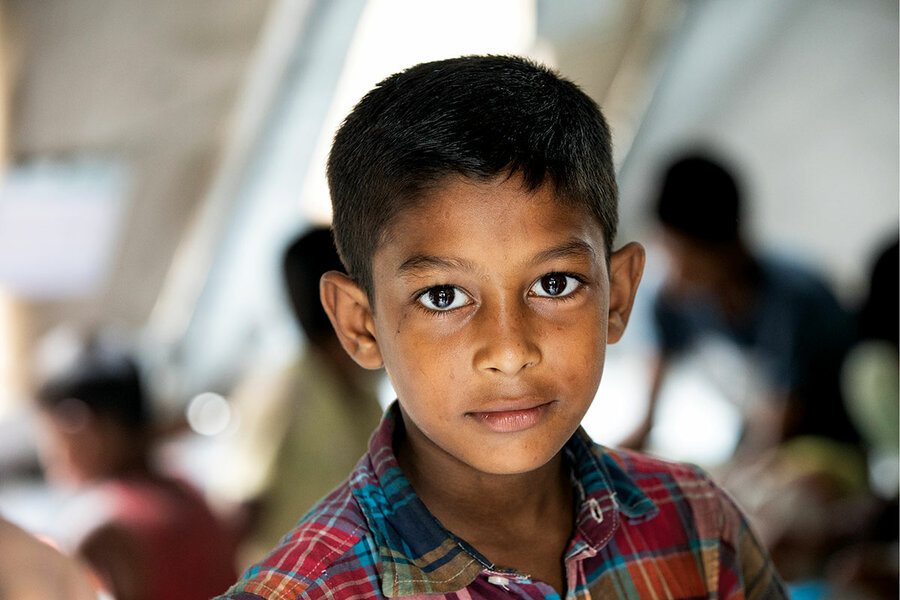In Pictures: In Bangladesh, a safety net for children at risk
Loading...
| Dhaka, Bangladesh
When photographer Melanie Stetson Freeman and I traveled through Bangladesh last fall, we clearly saw children at risk from poverty, climate change, and the economic fallout from the pandemic.
Yet meeting so many young people also reinforced our understanding that children around the world are the same; only the contexts are different.
Why We Wrote This
A story focused onThe difficulties in Bangladesh couldn’t be more different from life in wealthy Western nations. But when our reporting team visited a program for vulnerable children in Dhaka, it found something truly universal.
Take little Mohammad Rifat. He lost his home in a flood and doesn’t go to school because his parents can’t afford to send him. Instead, he attends a program for vulnerable kids run by the government and supported by UNICEF in Dhaka.
After showing off a drawing he made, Mohammad snatches another child’s drawing and tries to pose for a picture with it. He makes us laugh.
Expand this story to view the full photo essay.
Little Mohammad Rifat, who lost his home in a flood, doesn’t go to school.
His parents had to move from the coast to the capital, and they can’t afford to send him. Instead, he attends a program for vulnerable kids run by the government and supported by UNICEF in Dhaka. It’s one of thousands of initiatives by governments, United Nations agencies, and nongovernmental organizations aiming to protect children’s rights to education and safe and healthy environments.
When photographer Melanie Stetson Freeman and I traveled through Bangladesh last fall, we clearly saw children at risk from poverty, climate change, and the economic fallout from the pandemic. Yet meeting so many young people also reinforced our understanding that children around the world are the same; only the contexts are different.
Despite his nation’s big struggles, Mohammad is focused on the little things: the friends he misses and the dragon fruit he craves.
After showing off a drawing he made of the National Martyrs’ Memorial, Mohammad snatches another child’s drawing and tries to pose for a picture with it. He makes us laugh.












